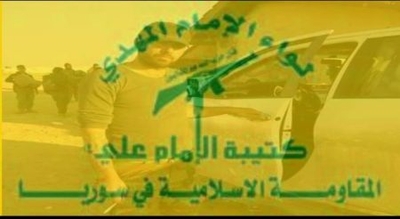
An emblem of Liwa al-Imam al-Mahdi (The Imam Mahdi Brigade): "Liwa al-Imam Mahdi: The Imam Ali Battalion. The Islamic Resistance in Syria." Note the classic extended arm and rifle associated foremost with Hezbollah and the Iranian Revolutionary Guard Corps. The quotation above the rifle reads: "Indeed the party of God are the ones who overcome" (Qur'an 5:56), a play on 'Hezbollah' (The party of God).
The Syrian civil war has seen the rise of a number of formations that promote the idea of building a native Syrian Muqawama Islamiya ('Islamic Resistance') and Hezbollah. Examples include Quwat al-Ridha (recruiting mainly from Shi'a in the Homs area), the National Ideological Resistance (based in Tartous/Masyaf area), theJa'afari Force (recruiting mainly from Damascene Shi'a) and al-Ghalibun. Liwa al-Imam al-Mahdi, referring to the twelfth Shi'i Imam, is another group along these lines. For comparison, the National Ideological Resistance also has the label Jaysh al-Imam al-Mahdi (The Imam Mahdi Army).
Liwa al-Imam al-Mahdi appears to have at least two sub-components: the Imam Ali Battalion and the Special Operations al-Hadi Battalion. The information available on Liwa al-Imam al-Mahdi through social media is patchy at best, but I was able to speak to the commander of the Imam Ali Battalion, who goes by the name of al-Hajj Waleed and is from Ba'albek in the Beqaa Valley in Lebanon. According to al-Hajj Waleed (who is a member of Hezbollah), Liwa al-Imam al-Mahdi was set up two years ago by Hezbollah and has recruits from all of Syria. Of course, this latter assertion is a fairly standard rhetorical line. Private Facebook accounts run by those associated with Liwa al-Imam al-Mahdi largely point to origins in western Syria.
The commander added that the group has participated in a number of battles, including Deraa, Quneitra, Ghouta, Aleppo and the Ithiriya-Raqqa route. Some of these operations (e.g. fighting in south Aleppo countryside and positions on theIthiriya hills) have been mentioned on social media. More images of relevance can be found below.
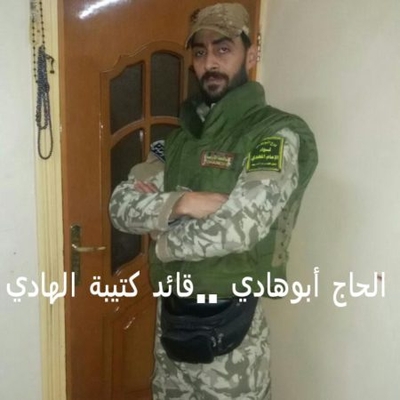
Abu Hadi, the leader of the al-Hadi Battalion. His real name appears to be Rani Jaber and he is Syrian (specifically from Deraa). Note his Liwa al-Imam al-Mahdi armpatch. The al-Hadi Battalion claims at least two squadrons: the first led by 'al-Saffah' and the second led by 'Abu Ali Karar.'
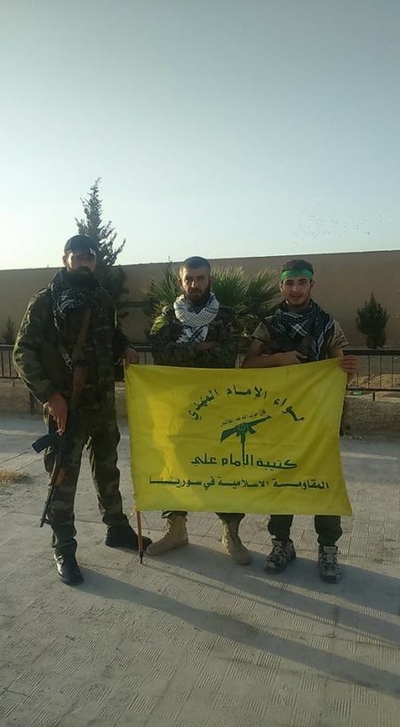
Fighters posing with the flag of Liwa al-Imam al-Mahdi (The Imam Ali Battalion). Identical with the emblem at the top of the article.
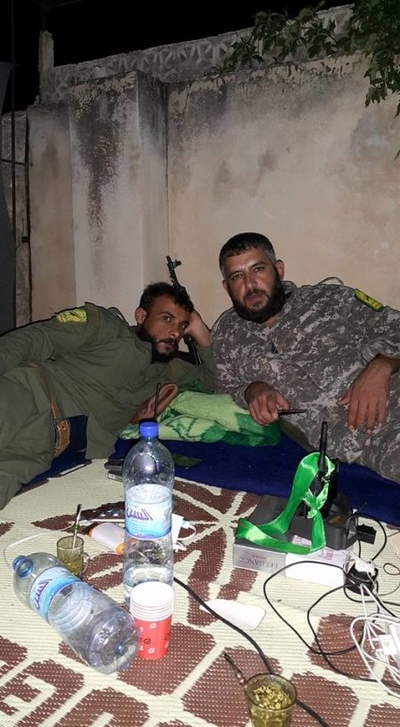
Liwa al-Imam al-Mahdi fighters in Aleppo. Note their armpatches.
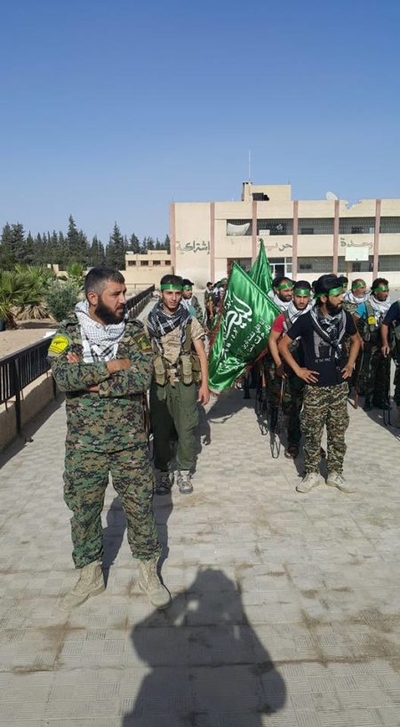
Liwa al-Imam al-Mahdi (The Imam Ali Battalion) fighters as part of preparations for "the battle of the north" (according to a source that posted this photo and others in early June 2016). This likely refers to participation in the Aleppo fighting.
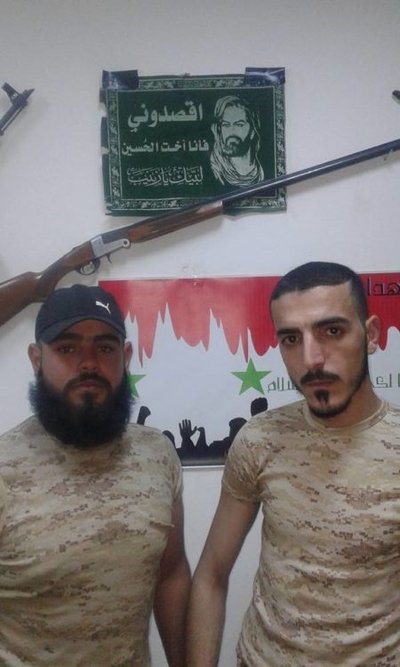
Liwa al-Imam al-Mahdi (al-Hadi Battalion) fighters. Note the portrait immediately behind them featuring the Syrian flag design. Portrait on top: "Come and behold me, for I am the sister of Hussein. At your service, oh Zaynab" (latter phrase in Arabic- Labbayk ya Zaynab– referring to Sayyida Zaynab, a central figure in Shi'i jihadi discourse on account of the concept of defending her shrine in the Damascus area).
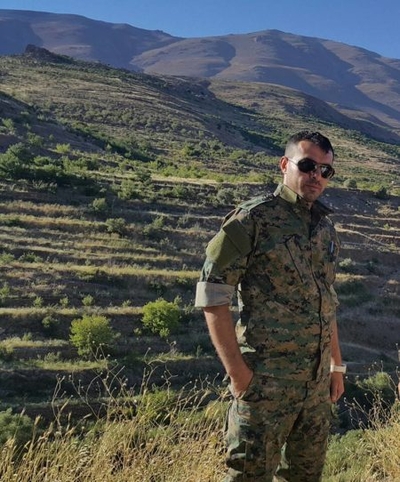
Al-Hajj Waleed
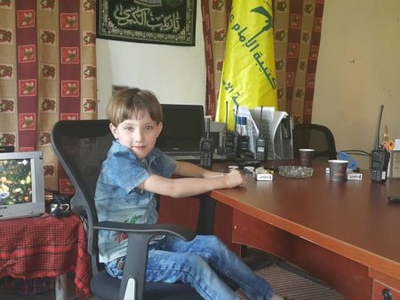
Photo from al-Hajj Waleed featuring the flag of Liwa al-Imam al-Mahdi (The Imam Ali Battalion). The portrait on the wall reads: "Oh Zaynab al-Kubra" ('al-Kubra' a common epithet given to Sayyida Zaynab).
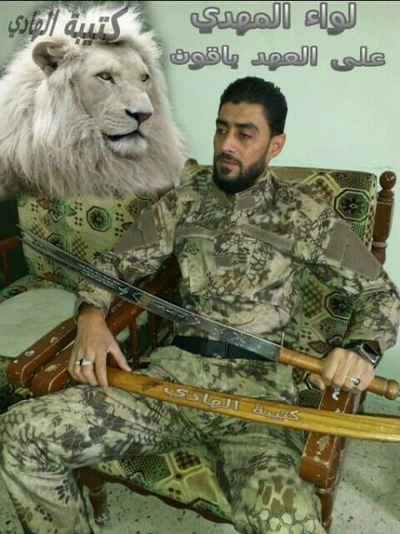
The leader of the al-Hadi Battalion with a sword on the design of Imam Ali's Dhu al-Fiqar. The text inserted into the photo reads: "Liwa al-Mahdi: remaining on the pledge, al-Hadi Battalion."
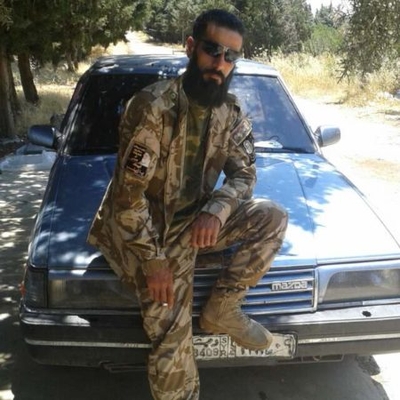
A Liwa al-Imam al-Mahdi member: note the armpatch featuring Iranian Supreme Leader Ayatollah Khamene'i. This affinity should not be surprising considering the group's connection to Hezbollah, which is itself ideologically loyal to Khamene'i.
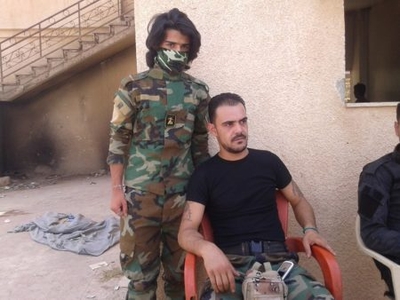
In the red chair: Muhammad Jaber (Abu Zayd), brother of Rani Jaber. Note the Hezbollah insignia on the person standing next to him.
In total, Liwa al-Imam al-Mahdi's contribution to the fighting in Syria seems similar in scale to that of the Ja'afari Force and the National Ideological Resistance. Al-Hajj Waleed gave his toll of killed ('martyrs') and wounded at 25 and 55 respectively. Thus, the military capabilities of these groups should not be exaggerated, but it is apparent how Hezbollah is trying to project influence into Syria through the creation of multiple formations and brands in order to recruit Syrians.
-------------------------------
Update (19 April 2017): Recent claims have circulated in rebel social media of Rani Jaber's death in fighting in Deraa. It should be clarified at this point that Rani Jaber's group became its own outfit, keeping the name of the al-Hadi Battalion but also adopting the name of Liwa al-Rasul al-Adham (The Great Apostle Brigade)/Liwa al-Rasul al-Akram (The Most Noble Apostle Brigade). Meanwhile, al-Hajj Waleed's contingent adopted the name Fawj al-Nabi al-Akram (The Most Noble Apostle Regiment). Perhaps the closest analogy is the split of the 313 Battalion from Liwa al-Sayyida Ruqayya. Incidentally, the 313 Battalion's use of the name Liwa al-Rasul al-Adham does not mean that it is part of Rani Jaber's group.
More generally, multiple Shi'i fighters of Deraa origin have been killed in the fighting and presented as coming under the mantra of the 'Islamic Resistance.' For example, in early February 2017, three fighters from the east Deraa town of Busra al-Sham, which had a notable Shi'i population until being conquered by rebels in 2015, were announced to have been killed in the Deraa fighting. More recently, a fighter from Qarfa (another Deraa village) was presented as a 'martyr' under the mantra of the 'Islamic Resistance.' Qarfa, like Busra al-Sham, has also had a notable Shi'i population, predating the civil war. The other main locality in Deraa province that has had a Shi'i population is Sheikh Maskeen.

